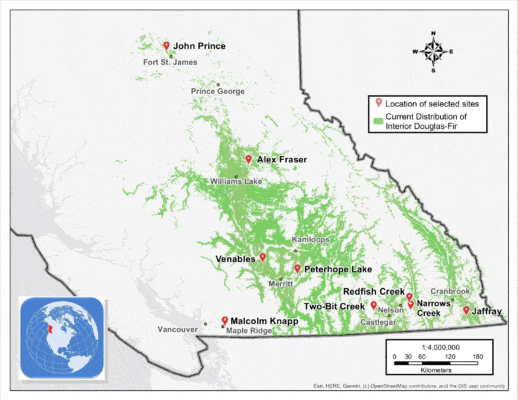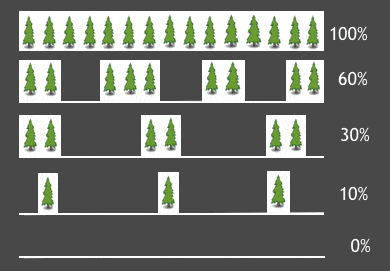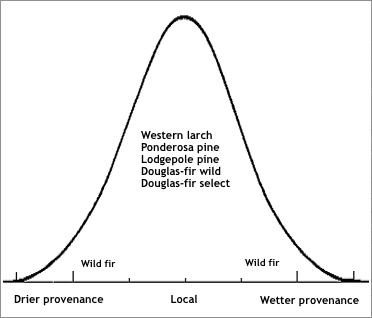Research Sites
List of all Research Sites with photos and detailed site descriptions.
List of Research SitesThe Mother Tree Project explores the following research questions:

There are a total of nine research locations included in the project – eight in the BC interior and one on the coast of BC. These sites cover a range of climates where Douglas-fir forests occur.
Learn more about all the locations and their ecological and climate characteristics as well as the site selection methods.

Each location has one or more 20 hectare forests that are being harvested using five different tree retention treatments that are 4 hectares each. These treatments range from high retention (keeping large patches of trees with Mother Trees present) to clearcutting.
Learn more about the retention treatments.

At each harvested block, a mixture of Douglas-fir, ponderosa pine, lodgepole pine and western larch has been planted. Locally adapted Douglas-fir seedlings were grown from “wild” seed that was collected in nearby forests (B class seed), as well as from seed collected from trees in seed orchards (A class seed). Douglas-fir seedlings were also grown from seed collected from a location with a climate that is similar to that projected for the site in 2050. Seedlings of the other three species were grown from local B class seed.
Learn more about the seed sources for each site.
Data was collected at each site before logging and will be collected at various intervals after logging. This data will be used to measure carbon storage, biodiversity, stand productivity as well as impacts on wildlife and fire risk.
Click here to read more about the data collection methods.
Click here to read a project summary.
Research Sites
List of all Research Sites with photos and detailed site descriptions.
List of Research SitesProject Summary
A 12-page summary of the Mother Tree Project research prepared in September 2019.
View PDF